I love the flexibility of cooking. If you gave 10 home chefs the same request, I bet you’d come away with at least three completely different ways to tackle it. Technique is often the most critiqued aspect of the way that a person cooks, but within the “how” of the dish, there’s also a question of the tools used.
I can assure you now that I am not about to launch into a whos-who of latest kitchen gimmicks. There’s a great chance that you will have at least one of these items covered and I do not encourage replacing something still of great service just because it’s not the one I’m using. Rather than just lining up a shopping listicle, I want to talk about some of the features to consider if you do find yourself needing to replace or add any items to help you enjoy your meals safely. Getting to use cutting-edge commercial kitchen equipment, only to return home to the hodgepodge of donations and thrift finds at night in my college years means I have practical experience on what you need, but also what to look for if you are upgrading.
Price definitely is not everything in the kitchen gadget world; I will lay down some trade offs on features where appropriate. You may be surprised, however, to find that a lot of the list is pretty low technology. I write my recipes with a cooking philosophy to make the production of the foods accessible, just like the textures. So lets get started with my first recommendation.
A Sharp Knife (and cutting board)
This is one item that I am not going to shout out any specific size or brand because this is one that is all about personalizing. The main aspect of selecting a knife comes down to what you’re going to be using it for. As you can see in the graphic below, there are some that quite task-specific, but there are also some more “daily driver” options. I have a nice big chef’s knife that I know can handle processing any ingredient in my meal. My husband prefers our santoku (or “three virtues” of mincing, slicing, and dicing) knife for any cooking that he does. There can be some options for size, but it will be easiest to shop once you have decided on a style. I also like to shop for a knife in person, just so I can get a feel for it in my hands.
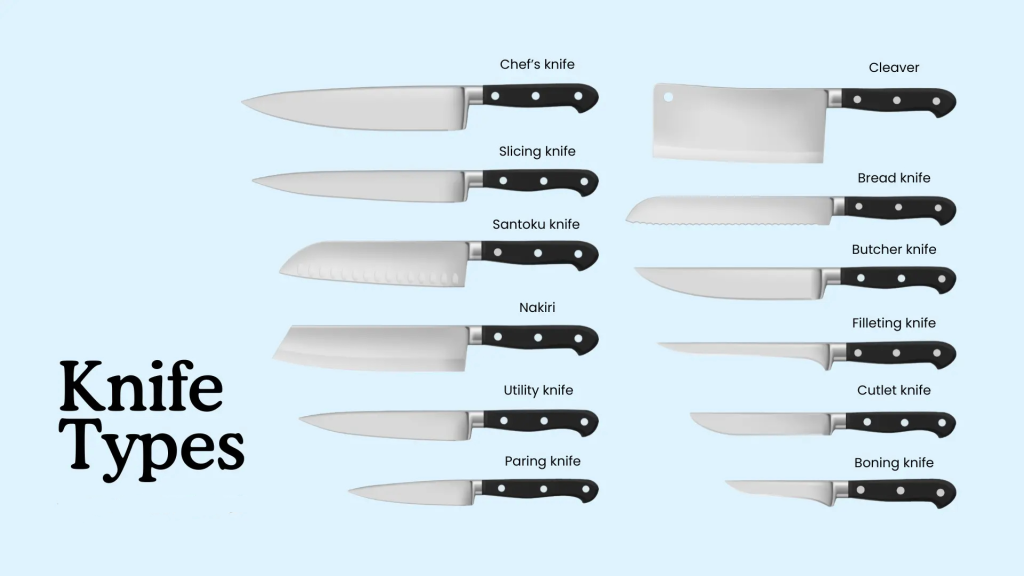
What becomes the most important when cooking for dysphagia diets is the state that you keep your knife in. It is super important to keep knives sharp, and while that applies to anyone’s knife for safety, dysphagia cooks must have a sharp edge for achieving safe textures. A dull knife may struggle with produce, smashing more delicate foods versus slicing. Even at the soft and bite sized levels, ensuring that you’re able to cut uniform pieces lets the entire pan will cook at the same speed, reducing the risk a few pieces not finishing cooking.
Cutting boards help keep your cutting surface level and protect your countertops. My main asks of a cutting board are easy to clean, durable, and large. While the last speaks for itself, the first two priorities can be managed by the material the cutting board is made of. Plastic cutting boards are lightweight but can wear down rather quickly, with divots that make it hard to be certain that there is no bacteria getting caught on the surface. Glass has been a super trendy option lately, and does rate high on the cleanability scale, but it is a small additional safety risk in the kitchen when considering big temperature swings and drops/impacts. I have found a well maintained wooden cutting board to be a nice balance of my requirements. I try to avoid decoration that changes the nice level surface or places where it can be hard to scrub clean.
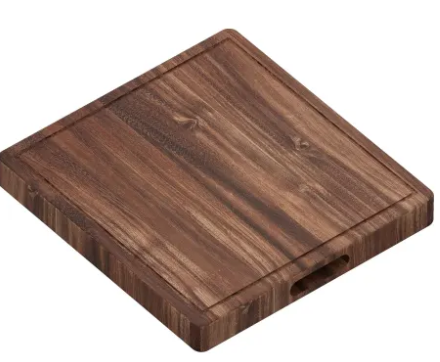
Maintaining wooden cutting boards mainly revolves around three maintenance steps: proper cleaning, deodorizing, and moisturizing. While I know dishwashers can be a life saver for conserving time and energy, it is not recommended or needed. Simply wash with hot water and soap by hand (no soaking) to avoid warping and allow it to full dry standing upright before storing flat. Deodorizing can be used to freshen up after some stinky foods (garlic, fish, etc); vinegar, baking soda, even lemon slices can be rubbed and left on the surface for a few minutes before rinsing off. To keep the wood from getting divots and protect it from water damage (even remove stains!), applying a natural mineral oil or food safe wood conditioner will help keep a smooth, sterile food prep area for years.
Portioning Molds
Texture modified meals, particularly lower on the International Dysphagia Diet Standardization Initiative (IDDSI) diet texture framework, benefit from some extra effort in the presentation to avoid “mash in a bowl”. Silicone molds or shaped trays let you freeze, reheat, and plate food into consistent shapes.
For folks that eat IDDSI Level 4 purees, molds of original food shapes have been an innovation that helps with recognition and enjoyment. If corn puree has a cob appearance, its easier to select the bite they want from multiple items on a plate. But despite the noble efforts to raise quality of life in these populations, I rarely recommend this for the home chef working with pureed diets. The drawback on these types of molds is the cost; these often make the most sense for care facilities that will use them for multiple plates per meal or prepared frozen dysphagia meal companies.
In contrast, the most cost-effective way to offer visual variety, by far, is piping using sandwich bags. Quick with no clean up, just add your ingredient to a bag and seal by twisting. Keeping the twisted portion in the palm of your hand to keep it closed, you can rock it back and use scissors to clip a small piece out of the corner. The smaller the hole, the more control you will have over the flow, but this will work best for the PU4 diet textures because it has a uniform texture. From there you can squeeze from the back and pipe the shape that you wish. Purees are able to mound, so you can create some dimension to your plating.
When it comes to IDDSI Level 5 minced and moist meals, one of my favorite mold hacks is soup cubes. Due to the cohesion factor that is needed to meet a true MM5 classification, loafs can be created without having to go through a full freezing process. By opting for a flexible mold, especially after chilling, its easier to remove from the mold and opens up possibilities for exciting plating options. These also end up making batch cooking storage more simple by allowing you to pull single servings, helping households with a single altered texture eater.
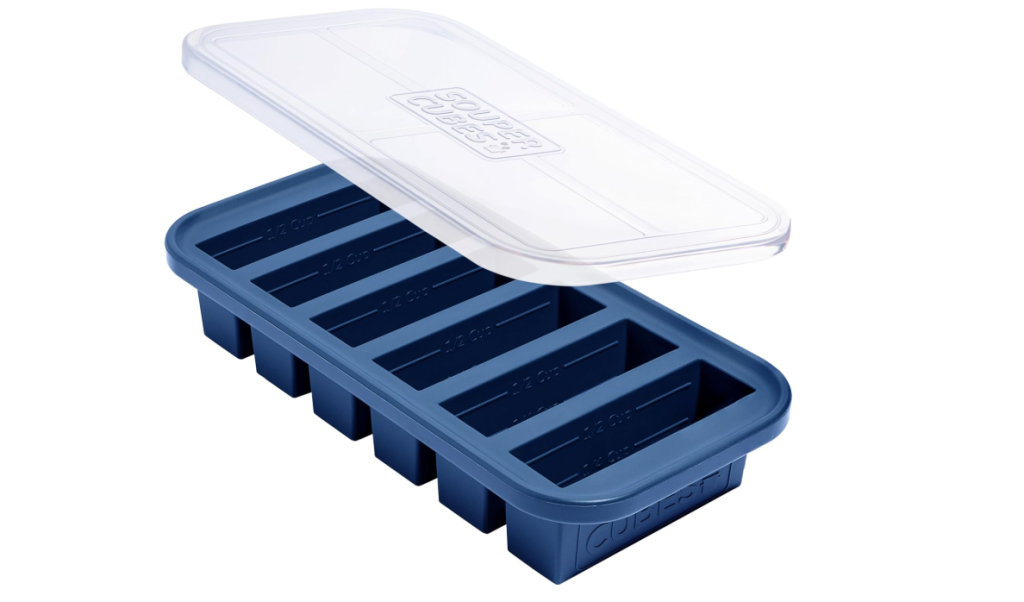
Fine Mesh Strainer
I think at #3 on this list, at least a few of you are surprised I haven’t named some high tech industrial blender yet. And the reality is, blenders and food processors do become big time savers when you need to take foods to levels 5 and below regularly or in large quantities. But even if you’re 100% pureed diet, you don’t need to spend big bucks to get a safe, uniform puree. What you need is to add one more step, after cooking until tender and blending: straining.
Seeds, skins, and other fibers are recommended to remove from modified texture diets because they can require extra effort to chew through and can get stuck in cheeks and gums, among other challenges. To make sure that each bite is predictable and manageable, processing these foods further is a labor of love. Sometimes its a quick run-over with a peeler and you’re ready to roll, but for more involved items, like berries with skins and seeds, you can save a lot of time by straining the fruit following cooking.
You do have options for straining tech; if you already own cheese cloths or coffee socks, you can place it over your catching bowl, pour your (safe to touch) puree into the opening, then squeeze the puree through the cloth. While this is an option, I wouldn’t recommend it. I have found that due to the tiny size of the openings, this has just tended to dehydrate my puree, allowing all of the liquid to escape and holding all of the fiber, which can radically change the texture. I have had more success with my fine mesh strainer for the balance allowing the puree through while catching excess fiber. Food mills are another invention that if you have one, its indispensable for it ability to separate seeds and skins. For most however, a little extra patience can save you some money.
The size of the strainer comes down to how much you’re going to be processing at a given time. If you like bulk prepping, you may find that a larger strainer that can sit over a mixing bowl to be the most helpful, as it takes some time to move all of the puree, especially if you have to keep stopping to empty the fiber from the center of the sieve. If you’re someone like me who is often doing one-off servings on the fly, you can save some money and space in you drawer by opting for a smaller one like mine, that just fits over a soup bowl or mug opening.
Steamer
Across all IDDSI modified texture diets, moisture is recommended, especially for people experiencing chronic dry mouth. From puree to easy to chew, a soft texture is essential as well. There are two types of heat when it comes to cooking methods: dry heat like grilling, baking and frying to create crisp and wet heat like boiling, braising and steaming to tenderize. Steaming is a gentle method that helps preserve nutrition better than boiling, a major win for people who are working to hit their daily nutrition needs.
It is totally possible to steam without a steamer; a colander added over a pot of boiling water can sometimes be achieved, but without a good seal, steaming could take considerably longer. You could even go for the free.50 hack of coiling foil into a circular support under a heat safe plate to keep it out of a layer of boiling water. However, a few singled knuckles later, I was looking for a new solution. This silicone version is super versatile, as it is made of silicone and is therefore microwave safe, as well as pots and pressure cookers. Modern steamers are majority made of metal, which can damage non-stick cookware and require cooking on a stove.
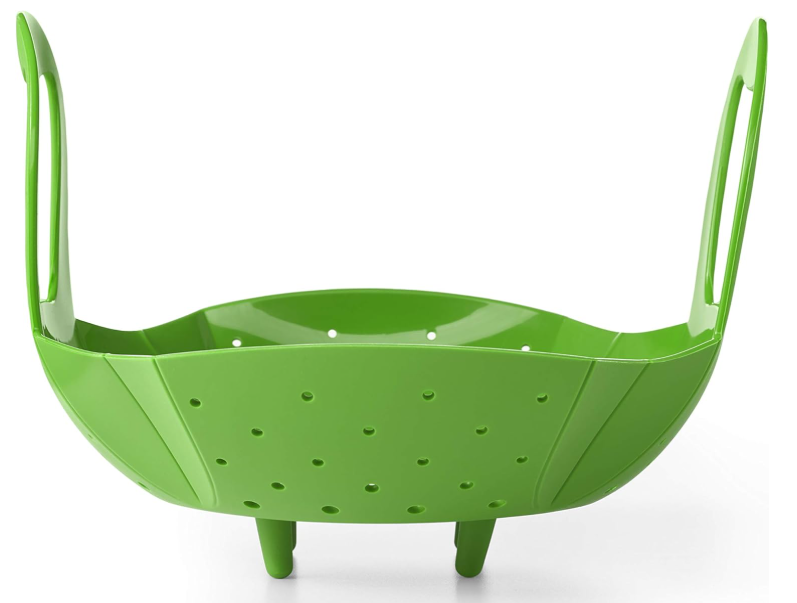
Blender/Food Processor
Ok, fine, yes, we need to talk about blenders. While some diet levels are going to rely on this more than others, this is a very common appliance and there are some considerations when purchasing for dysphagia diets. Especially if puree is currently the only texture being used, it is highly important to still give the person the option to select their bite. By separately pureeing and presenting elements of the dish, its possible for them to see how much they are picking up of each flavor. For these households, I recommend a blender with a blending lid + base so you can just clean the lid and move it to the next element in a different cup.
Along with a chopping blade, my blender came with a grinding lid, which is super handy for grinding coffee, nut butters, seeds and spices. Screw on one of the storage lids and you can quickly recreate the same presentation for leftovers without dirtying more dishes. Immersion blenders can also offer this quick versatility, and there are becoming more affordable options.
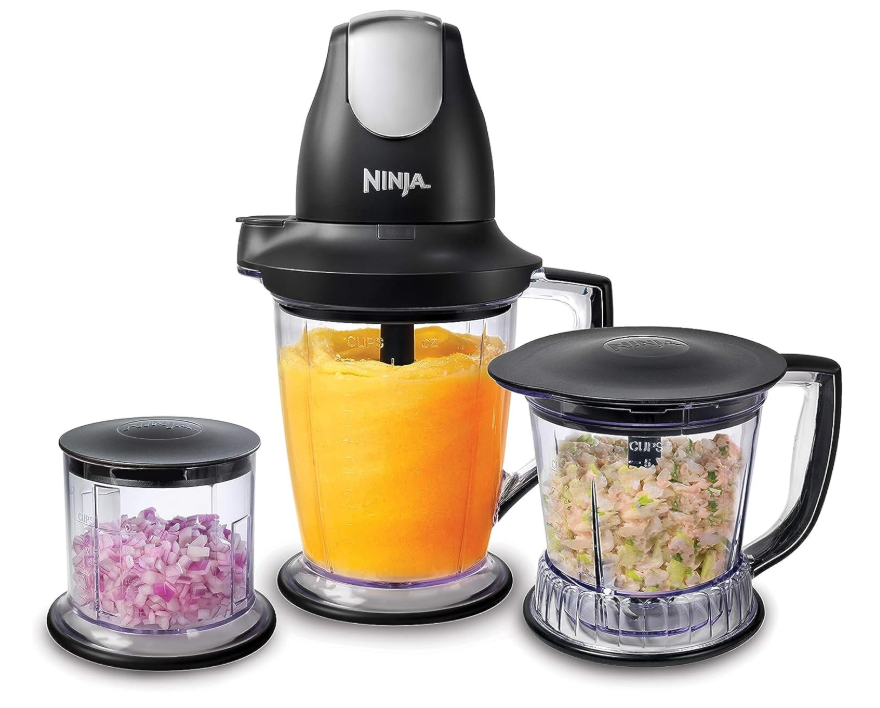
As your diet texture moves up to minced and moist and beyond, food processors often make more sense. Rather than the smoothie cup shape, the cup is wider and there are more, sharper blade options for processing produce and meats. There are even systems, like this Ninja, that give you option for both, employing a power base that fits on a pitcher blender and a wider processor. A family member owns one and while I thoroughly enjoyed the results of it, I don’t see it as a need unless there are a wide range and a large quantity of modified texture diet levels in a single kitchen.
Closing Thoughts
Whether its predominantly time or its through additional ingredients or tools, experiencing dysphagia has hidden costs. It is a goal of this project to help people navigate these often rugged terrains of changing meals to fit where they are in a given moment. I hope this article is a supportive middle ground to see the solutions you need in the tools that you may already have, to help cut back on the impact on your wallet so you can focus on your health.
I currently donate my time and expertise to create Same Menu recipes and resources. If you want to support me, please consider doing your online shopping using my links (even if you buy other products!). As an Amazon Associate, I earn from qualifying purchases. Thanks for your contribution!
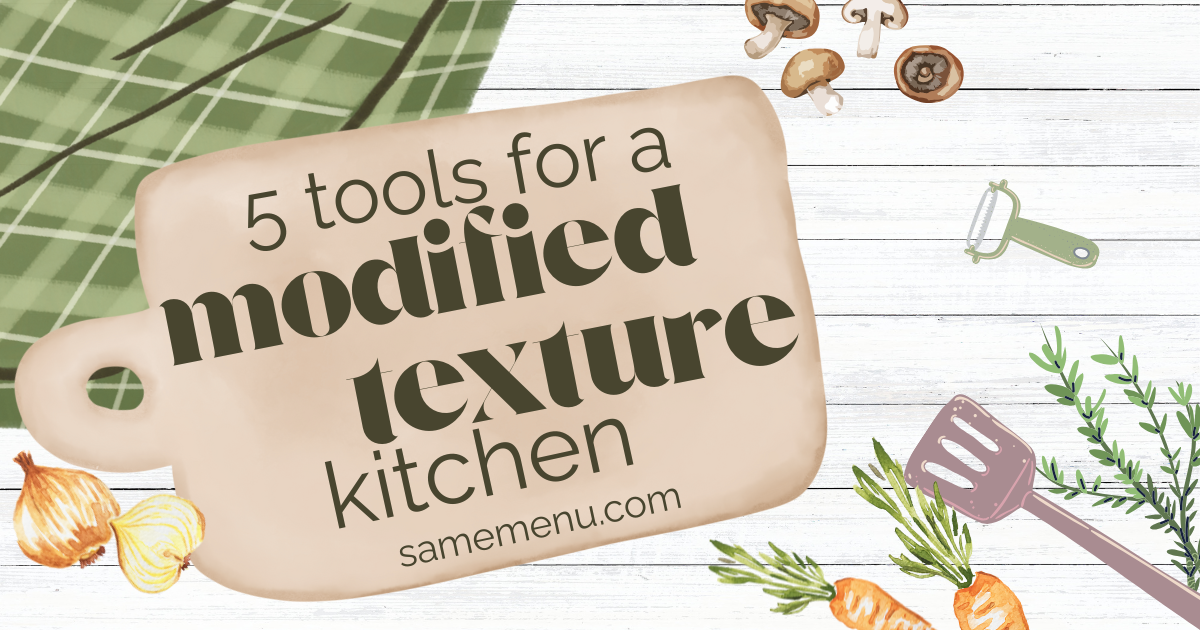
Leave a Reply